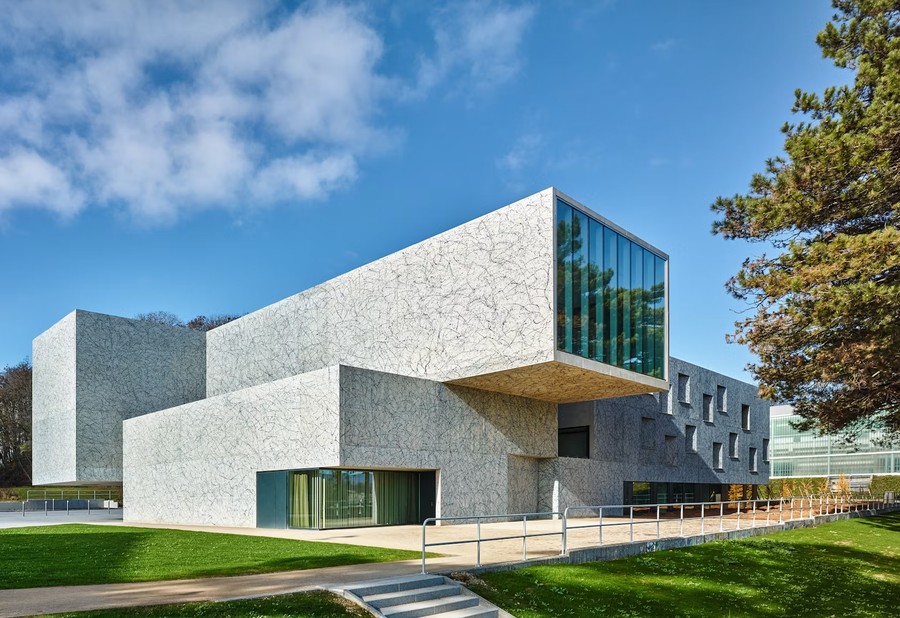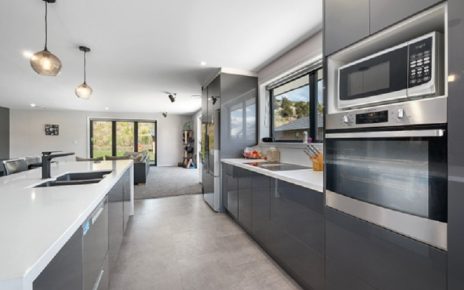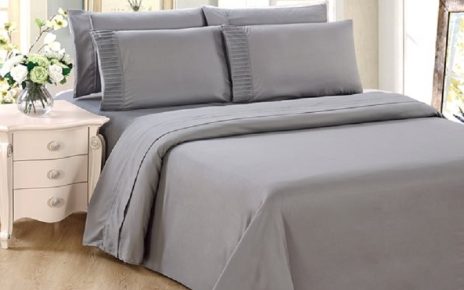In recent years, the popularity of conservatories has surged among homeowners seeking to blend indoor comfort with outdoor aesthetics. A conservatory is more than just an extension of the home—it’s a versatile living space that merges architecture, nature, and lifestyle. Whether used as a sunroom, a greenhouse, or a tranquil reading nook, the success of a conservatory hinges on the careful selection and integration of its core elements. Among these, structural integrity, glazing, ventilation, thermal efficiency, and design harmony are paramount. This article explores the essential conservatory elements, with a special focus on the often-overlooked but increasingly vital component: udestueelementer.
What Is a Conservatory?
A conservatory is a glass or transparent-roofed structure, typically built onto the side of a house. Originating in 19th-century Europe as a space to grow exotic plants, modern conservatories serve a broader purpose. They are now multifunctional rooms used for relaxation, dining, entertaining, or even home offices. Their appeal lies in their ability to flood interiors with natural light while offering panoramic views of the garden.
However, turning a dream conservatory into reality requires more than just glass and frames. It demands a deep understanding of architectural components, materials, and climate control—elements that ensure comfort, durability, and energy efficiency.
Key Elements of a Conservatory
1. Frame Material
The frame forms the skeleton of the conservatory and significantly influences its strength, insulation, and appearance. The most common materials include:
- Aluminum: Lightweight, durable, and low-maintenance. Modern thermally broken aluminum frames prevent heat loss.
- UPVC (Unplasticized Polyvinyl Chloride): Cost-effective, energy-efficient, and available in various colors. Ideal for traditional homes.
- Wood: Offers a classic, elegant look and excellent insulation. Requires more maintenance but provides unmatched aesthetic warmth.
- Composite: Combines the strength of aluminum with the insulating properties of wood, offering a high-end solution.
The choice of frame material affects not only the look but also the performance of the conservatory, especially in extreme weather conditions.
2. Glazing
Glazing is perhaps the most defining element of a conservatory. It determines light transmission, heat retention, and noise reduction.
- Double or Triple Glazing: Essential for thermal efficiency. Modern conservatories use double or triple-glazed units with low-emissivity (Low-E) coatings to minimize heat loss in winter and reduce solar gain in summer.
- Toughened or Laminated Glass: Enhances safety and security. Laminated glass also reduces noise, making it ideal for urban homes.
- Self-Cleaning Glass: A newer innovation that uses a photocatalytic coating to break down organic dirt, reducing maintenance.
Proper glazing ensures the conservatory remains comfortable year-round, avoiding the common pitfalls of overheating in summer or freezing in winter.
3. Roof Design and Materials
The roof is critical for both aesthetics and functionality. Options include:
- Glass Roofs: Maximize light and create a seamless indoor-outdoor feel. Often combined with solar control coatings.
- Polycarbonate Roofs: Lightweight and insulating, but may yellow over time and offer less clarity than glass.
- Solid Roofs: Increasingly popular for transforming conservatories into fully insulated, year-round living spaces. These often include insulation, plasterboard, and integrated lighting.
The roof must be designed to handle weather loads, provide adequate insulation, and complement the home’s architectural style.
4. Ventilation and Climate Control
Without proper ventilation, a conservatory can become stifling in summer and damp in winter. Effective climate control includes:
- Roof Vents and Windows: Allow hot air to escape, promoting natural airflow.
- Trickle Vents: Built into window frames for continuous, low-level ventilation.
- Mechanical Ventilation Systems: Such as fans or HVAC integration for larger or frequently used spaces.
Smart thermostats and automated vent openers can further enhance comfort by responding to temperature changes.
5. Flooring and Interior Finishes
The flooring must withstand temperature fluctuations and high humidity. Popular choices include:
- Ceramic or Porcelain Tiles: Durable, easy to clean, and available in wood or stone finishes.
- Engineered Wood: Offers warmth underfoot but requires careful moisture management.
Vinyl
- Plank: Waterproof and realistic in appearance, ideal for wet climates.
Interior finishes such as skirting boards, cornices, and lighting should complement the main house to create a cohesive transition.
6. Heating and Insulation
To make a conservatory usable in colder months, proper insulation and heating are essential. Solutions include:
- Underfloor heating (electric or water-based)
- Radiators or fan heaters
- Insulated glass units and thermal breaks in frames
- Secondary glazing or curtains for added warmth
Energy-efficient design ensures the space doesn’t become a liability on utility bills.
The Role of Udestueelementer in Conservatory Design
While many conservatory components are well-known, one term gaining traction—especially in Scandinavian and Northern European architecture—is udestueelementer. This Danish/Norwegian word translates to “outdoor room elements” or “elements for outdoor living spaces.” In the context of conservatories, udestueelementer refers to the functional and decorative components that enhance the usability and comfort of a conservatory as a transitional space between indoors and outdoors.
What Are Udestueelementer?
Udestueelementer encompasses a wide range of features designed to extend living areas into the garden or patio while maintaining comfort and style. These include:
- Integrated Seating and Benches: Built-in wooden or composite benches along the perimeter provide seating without cluttering the space.
- Outdoor Kitchenettes or Bar Areas: Compact sinks, mini-fridges, or countertop spaces for preparing drinks or snacks.
- Heated Flooring Systems: Often part of udestueelementer, ensuring comfort even in cooler months.
- Weather-Resistant Lighting: LED strips, pendant lights, or recessed lighting designed for humid environments.
- Automated Blinds and Shades: Motorized systems that adjust based on sunlight, temperature, or time of day.
- Ventilation Hatches and Louvers: Strategically placed to manage airflow without compromising security.
- Planters and Green Walls: Integrated into the structure to bring nature inside, enhancing air quality and aesthetics.
These elements transform a basic conservatory into a true udestue—an “outdoor room” that feels like a natural extension of the home.
Why Udestueelementer Matter
The concept of udestueelementer reflects a growing trend in architecture: the blurring of boundaries between indoor and outdoor living. In countries like Denmark and Sweden, where daylight is limited in winter and cherished in summer, maximizing usable space is crucial. Udestueelementer allow homeowners to enjoy their gardens year-round, protected from wind, rain, and cold.
In conservatory design, incorporating udestueelementer means thinking beyond structure and glazing. It’s about creating a functional, inviting space that supports lifestyle needs—whether that’s morning coffee with a view, afternoon gardening, or evening entertaining.
For example, a conservatory with udestueelementer might feature:
- A heated tile floor with underfloor heating
- A fold-down dining table for four
- Integrated LED mood lighting
- Remote-controlled roof vents
- A built-in planter for herbs and succulents
- Weatherproof speakers for music
These features don’t just add convenience—they elevate the conservatory from a seasonal addition to a central part of the home.
How to Incorporate Udestueelementer into Your Conservatory
- Plan Early: Udestueelementer are most effective when integrated during the design phase. Work with an architect or conservatory specialist to identify your needs.
- Prioritize Function: Decide how you’ll use the space. Is it for relaxation, dining, or gardening? Choose elements accordingly.
- Choose Durable Materials: Since conservatories are exposed to sunlight and moisture, materials must be UV-resistant, non-corrosive, and easy to maintain.
- Invest in Smart Technology: Automated blinds, thermostats, and lighting can be part of your udestueelementer strategy, offering convenience and energy savings.
- Ensure Seamless Transitions: Doors should open wide, and flooring should flow from the house into the conservatory to enhance the sense of continuity.
Design Trends in Modern Conservatories
As lifestyles evolve, so do conservatory designs. Current trends emphasize sustainability, multifunctionality, and integration with smart home systems.
1. Biophilic Design
This approach emphasizes a connection with nature. Incorporating udestueelementer like living walls, natural wood finishes, and water features supports biophilic principles, improving well-being and air quality.
2. Minimalist Frames
Slim-profile aluminum frames maximize glass area, creating a “floating” effect. These are ideal for contemporary homes and work well with udestueelementer by reducing visual clutter.
3. Smart Conservatories
Integration with home automation systems allows control of lighting, temperature, and ventilation via smartphone or voice command. Udestueelementer such as automated blinds and sensors are central to this trend.
4. Eco-Friendly Materials
Recycled aluminum, sustainably sourced wood, and low-VOC glazing sealants are becoming standard. Energy-efficient udestueelementer contribute to a lower carbon footprint.
5. Multi-Season Use
Modern conservatories are no longer summer-only spaces. With proper insulation, heating, and udestueelementer, they can be used comfortably in all seasons.
Common Mistakes to Avoid
Even with the best materials and udestueelementer, poor planning can undermine a conservatory’s success. Watch out for:
- Ignoring Orientation: A south-facing conservatory may overheat; a north-facing one may stay cold. Position and shading are crucial.
- Poor Insulation: Single-glazed units or uninsulated frames lead to discomfort and high energy costs.
- Neglecting Ventilation: Without adequate airflow, condensation and mold can develop.
- Overlooking Udestueelementer: Skipping functional features like integrated seating or lighting limits usability.
- Mismatched Style: The conservatory should complement, not clash with, the main house.
Conclusion: The Future of Conservatories Lies in Thoughtful Integration
A successful conservatory is not just about glass and structure—it’s about creating a livable, adaptable space that enhances daily life. The integration of udestueelementer represents a shift toward smarter, more functional design, where every component serves a purpose.
From heated floors and automated vents to built-in planters and smart lighting, udestueelementer bridge the gap between indoor comfort and outdoor beauty. They allow homeowners to enjoy the best of both worlds: the protection of a roof and walls, with the freedom and freshness of the open air.
As architectural trends continue to favor seamless indoor-outdoor living, the role of conservatory elements—especially innovative concepts like udestueelementer—will only grow. Whether you’re planning a new build or renovating an existing conservatory, investing in quality materials, energy efficiency, and thoughtful udestueelementer will ensure your space remains a cherished part of your home for years to come.





